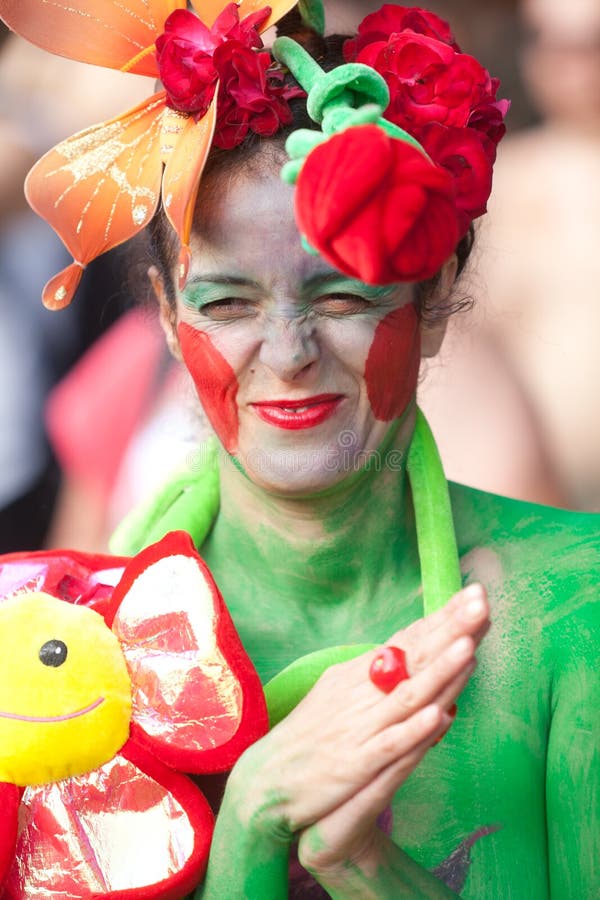Exploring Africa's Naked Tribes: Culture, Tradition, And Resilience
In a world increasingly dominated by globalized norms and societal conventions, the concept of clothing often seems inextricably linked to human civilization. Yet, across the vast and diverse continent of Africa, there exist communities where the absence of garments is not a sign of backwardness, but a deeply ingrained cultural practice, a profound connection to heritage, and a celebrated way of life. This article delves into the fascinating world of naked African tribes, exploring their unique traditions, beliefs, and the resilience with which they maintain their ancestral customs in the 21st century.
Readers, have you ever wondered about the cultural significance of nudity in native tribes around the world? Far from being a mere lack of attire, for many indigenous communities, embracing nudity is a powerful statement of identity, a spiritual practice, and a testament to an enduring bond with nature. These communities offer a rare glimpse into humanity's earliest forms of living, reminding us that civilization takes many forms, and not all are defined by the clothes we wear.
Table of Contents
- Understanding Cultural Nudity: Beyond the Western Gaze
- The Himba People: Red Ochre and Resilient Traditions
- The Omo Valley Tribes: Ethiopia's Living Heritage
- Nigeria's Unyielding Communities: Preserving Ancient Ways
- The Sentinelese: An Isolated Existence
- Cultural Significance and Misconceptions
- Challenges and the Future of Naked African Tribes
- Ethical Engagement and Cultural Exploration
Understanding Cultural Nudity: Beyond the Western Gaze
The concept of clothing, as we understand it today, is largely a construct of societal evolution and cultural norms that have varied wildly across time and geography. Given whatever theory of civilization and the birth of man, the earliest man had no clothing on. Citing from the biblical angle, it wasn’t until a specific event that clothing became a necessity. This historical perspective highlights that nudity, in its most fundamental form, was the original state of humanity. For many indigenous communities, this primordial state has been maintained not out of ignorance or lack of resources, but as a conscious choice rooted in deep cultural, spiritual, and practical reasons.
- Jordan Rodrigues Ethnicity
- Taliya Gustavo Leaked
- Undeadem Leaked
- Taylor Frankie Paul High School
- Ww Xx 2024
When we discuss naked African tribes, it is crucial to approach the subject with an open mind, shedding preconceived notions often influenced by Western modesty standards. For these tribes, nudity is not about sexuality or exhibitionism; it is often about identity, connection to the land, spiritual purity, and an unadorned acceptance of the human form. It can signify status, age, or a direct relationship with the natural environment. Understanding this fundamental difference is the first step in appreciating the rich cultural tapestry these communities represent.
These naked tribes are not peculiar to a particular region or country; however, those in Africa have over time been a course to study, offering profound insights into human diversity. Despite being in the 21st century, these rural communities have managed to preserve their culture and continue to practice nudity, standing apart in a world adorned with garments and fabrics. Their existence challenges the globalized narrative of progress and modernity, asserting the validity of alternative ways of life that prioritize tradition and harmony with nature over contemporary conventions.
The Himba People: Red Ochre and Resilient Traditions
Welcome to the arid lands of northern Namibia, home to the Himba people—a resilient and fascinating tribe known as the "red people" due to their distinctive ochre-infused appearance. The Himba are one of the most recognized naked African tribes, celebrated for their unique customs and striking beauty. The indigenous people have a population of approximately 50,000, living in northern Namibia, largely isolated from external influences.
- Dass 393
- Sotwe T%C3%BCrbanl%C4%B1 T%C3%BCrk
- Was The Shah Of Iran Bad
- Elizabeth Taylor Grandchildren
- 0073 Country Code
Traditionally, both Himba men and women walk around naked, though women are more commonly seen without upper body clothing, adorned with elaborate jewelry and hairstyles. What truly sets them apart is their unique approach to hygiene and beauty. They do not take baths with water; instead, they make aromatic baths with herbs, creating a smoke bath that cleanses and perfumes their skin. This practice, combined with applying a mixture of red ochre, butterfat, and aromatic resins (known as 'otjize') to their skin and hair, serves multiple purposes: it protects them from the harsh sun and insect bites, maintains skin hygiene, and gives them their iconic reddish hue, symbolizing earth and life.
Many consider the Himba people the most beautiful African tribe, not just for their physical appearance but for the profound cultural integrity they embody. The women of this tribe in Africa walk around naked, showcasing their intricate hairstyles, which change with age and marital status, and their heavy copper and shell jewelry. Their way of life is deeply intertwined with their cattle, which are a primary source of wealth and status. The Himba's ability to maintain their traditions in the face of modern pressures is a testament to their strong cultural identity and resilience.
The Omo Valley Tribes: Ethiopia's Living Heritage
Moving east, the remote Omo Valley in Ethiopia is a crucible of diverse cultures, home to numerous indigenous groups who have largely remained isolated from the outside world. This isolation has allowed the Omo tribes, including the Surma, to adopt a number of unique rituals and practices, making them some of the most compelling naked African tribes to study. Their practices, often involving body painting, scarification, and lip plates, are not merely aesthetic but are deeply symbolic, marking rites of passage, social status, and spiritual beliefs.
The Surma tribe, in particular, is known for its striking body adornments and the practice of lip plates among women, a symbol of beauty and status. While not entirely naked in the same way as the Himba, their traditional attire is minimal, often consisting of loincloths or simply body paint, allowing their natural form and elaborate body art to be the primary expression of their identity. Their ceremonies and daily lives are a vibrant display of ancient customs, preserved through generations.
Marisa Papen's Immersion: A Photographer's Perspective
The allure of these untouched cultures has drawn artists and adventurers alike. Over the weekend, I've been reading up on photographer and travel blogger Marisa Papen, who swapped her Belgian home for a new cultural experience with the Surma tribe in Ethiopia. Her journey included living nude amongst them, and also shaving her head in the tradition of the Surmas. You can see many of her photos of the Surma, which offer an intimate and respectful glimpse into their daily lives and cultural practices. Papen's immersion highlights the profound experience of shedding modern conventions to truly connect with a culture that embraces a more natural state of being. Her work, while controversial to some, underscores the raw beauty and authenticity of these communities, offering a unique window into a world where clothing norms are entirely different.
Nigeria's Unyielding Communities: Preserving Ancient Ways
Nigeria, a country of immense cultural diversity, is also home to several native tribes that have successfully resisted influence from the Western world. Despite being in the 21st century, these rural communities have managed to preserve their culture and continue to practice nudity. Meet the naked tribes of Nigeria, who stand as powerful examples of cultural resilience against the tide of globalization. Their existence reminds us that cultural preservation is not merely about museums and artifacts, but about living traditions and the enduring spirit of a people.
The Jibu Tribe: Descendants of Kwararafa
The Jibu tribe, located in the mountains in the Gashaka Local Government Area of Taraba State, are descendants of the ancient Kwararafa Kingdom. Stephen Osu was the journalist that discovered and publicised their unique way of life. The Jibu people prefer to live naked and only cover parts of their bodies with leaves, particularly for modesty or practical purposes. Their isolation in mountainous terrain has played a significant role in their ability to maintain their traditional lifestyle, largely untouched by external pressures. Their choice to live without extensive clothing is deeply rooted in their ancestral customs and their connection to their environment.
The Kambari Tribe: Independent Lifestyles
The Kambari tribe in Nigeria is one of the few tribes that still practice nudity. They live independent of the federal government, maintaining a self-sufficient existence that prioritizes their cultural autonomy. Their traditional attire, or lack thereof, is a symbol of their independence and their adherence to ancient customs. For the Kambari, being naked was, in fact, the way of life of early man and still is the way of life of indigenous African people as well as other indigenous people around the world. This perspective frames nudity not as a deficiency, but as a continuation of a primal, authentic human existence, free from the constraints and expectations of modern society.
The Sentinelese: An Isolated Existence
While the primary focus of this article is on naked African tribes, it is worth briefly mentioning another intriguing example of a community that embraces nudity and nature’s embrace in a world adorned with garments and fabrics. Where societal norms dictate the need for clothing, there exists a tribe that defies convention and lives in harmony with nature. This intriguing tribe, known as the Sentinelese, inhabits the remote North Sentinel Island in the Andaman Sea. They are perhaps one of the most isolated groups on Earth, fiercely resisting all contact with the outside world. Their lifestyle, which includes minimal to no clothing, is a testament to an extreme form of cultural preservation, where isolation has allowed ancient ways to persist entirely undisturbed. Though not African, their existence underscores the global phenomenon of communities choosing to live outside conventional norms, embodying an ancient connection to the natural world.
Cultural Significance and Misconceptions
The unique lifestyles, beliefs, and values of Africa's naked tribes showcase their rich cultural diversity and traditions. For these communities, nudity is rarely about sexuality in the Western sense. Instead, it is often imbued with layers of meaning:
- Identity and Belonging: The way one adorns their body (or doesn't) can signify tribal affiliation, age group, marital status, or social role.
- Connection to Nature: Living unclothed can symbolize a direct, unmediated relationship with the natural environment, reflecting a philosophy of harmony rather than separation.
- Spirituality and Purity: In some cultures, the unadorned body is seen as a state of purity, closer to the divine or ancestral spirits.
- Practicality: In hot climates, minimal clothing is simply more practical for comfort and movement.
- Resistance to Assimilation: For some, maintaining traditional dress (or lack thereof) is a powerful act of resistance against external pressures to conform to modern, often Western, standards.
A common misconception is that these tribes are "primitive" or "uncivilized" because they do not wear clothes. This judgment reflects a ethnocentric bias that equates civilization solely with Western material culture. In reality, these tribes possess complex social structures, intricate belief systems, sophisticated knowledge of their environment, and rich oral traditions. Their choices are deliberate, rooted in generations of wisdom and cultural continuity.
Challenges and the Future of Naked African Tribes
Despite their resilience, naked African tribes face increasing challenges in the 21st century. Modernization, encroachment on their ancestral lands, climate change, and the influence of external cultures (including missionaries and tourism) pose significant threats to their traditional ways of life. Governments and international organizations often struggle with how to approach these communities, balancing the desire for integration and development with the imperative to protect cultural heritage and self-determination.
The pressure to conform to global norms, including adopting Western clothing, is immense. Young generations within these tribes may be drawn to the perceived advantages of modern life, leading to a gradual erosion of traditional practices. However, many communities are actively working to preserve their heritage, often with the support of cultural activists and ethical tourism initiatives that seek to empower them while respecting their autonomy. The ongoing existence of tribes that still celebrate nudity in 2022 is a powerful statement about the enduring strength of cultural identity.
Ethical Engagement and Cultural Exploration
For those interested in exploring the unique culture of naked African tribes, ethical engagement is paramount. It is crucial to approach these communities with respect, humility, and a genuine desire to learn, rather than to merely observe as a spectacle. Responsible tourism, guided by principles of cultural sensitivity and community benefit, can play a role in supporting these tribes to maintain their traditions.
Top destinations for such cultural exploration often include the Omo Valley in Ethiopia and Northern Namibia for the Himba. However, any visit must be undertaken with reputable tour operators who prioritize the well-being and consent of the communities, ensuring that interactions are mutually respectful and beneficial. The goal should be to foster understanding and appreciation for their unique lifestyles, beliefs, and values, showcasing their rich cultural diversity and traditions, rather than contributing to the commodification or erosion of their heritage.
In a world of clothing, a tribe that stands apart truly offers a profound lesson in human diversity and the myriad ways in which people choose to live and express themselves. Embracing nudity and nature’s embrace is not a relic of the past for these communities, but a vibrant, living tradition that continues to shape their identity and connection to the world around them.
The journey into understanding Africa's naked tribes is a journey into the depths of human history and cultural resilience. It challenges us to look beyond superficial differences and recognize the inherent value in every way of life. If this exploration has sparked your curiosity, we encourage you to delve deeper into the anthropological studies and documentaries available, and consider supporting organizations dedicated to the preservation of indigenous cultures. Share your thoughts in the comments below – what aspects of these tribes' traditions resonate most with you?

Back view of nacked woman relaxing in jacuzzi outdoors. Generative AI

Naked Bike Ride in Thessaloniki - Greece Editorial Stock Image - Image

Very Muscular Handsome Athletic Man Stock Image - Image of muscular